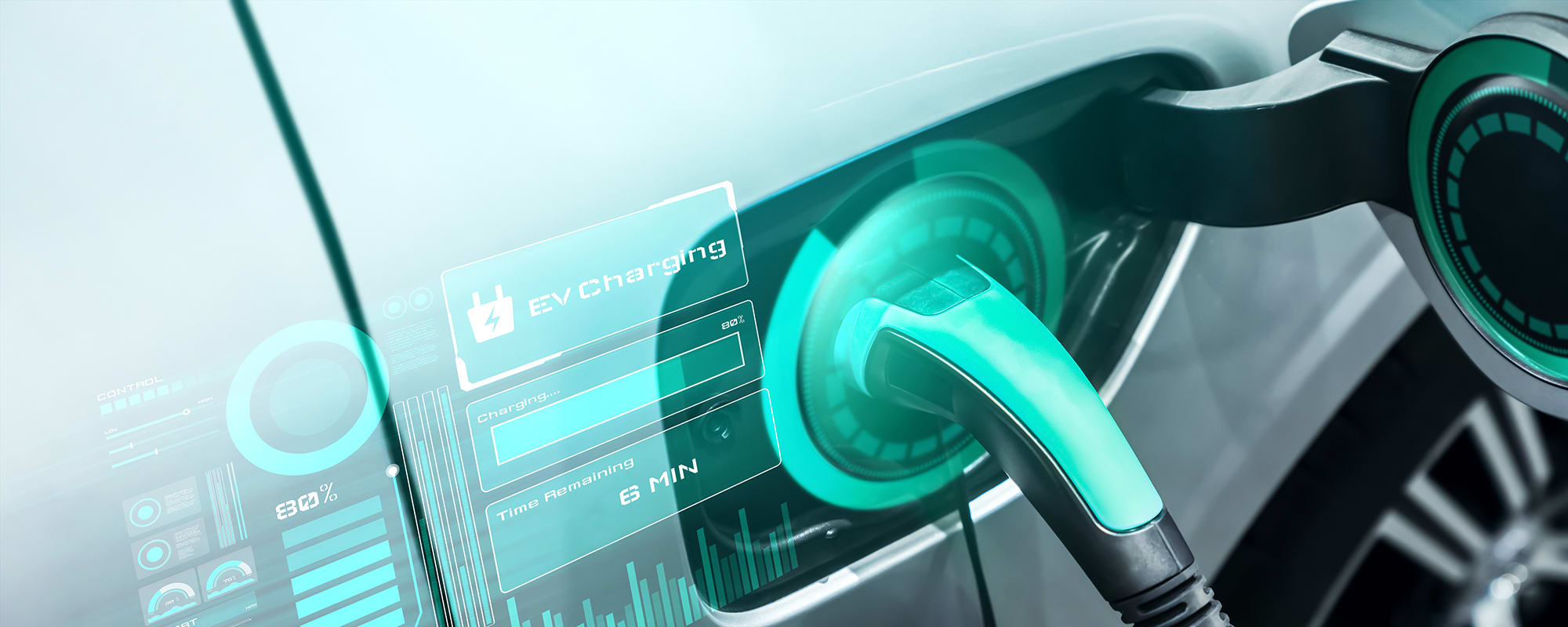Vince Carioti
Director, Phoenix Contact E-Mobility, North America
Lyndsey Walling
E-Mobility Product Manager, Phoenix Contact E-Mobility, North America
RS’s “Ask The Expert” series taps into the experience and expertise of key thought leaders and subject matter experts from the more than 550 global suppliers we work closely with to bring customers solutions for their most challenging problems (and the daily ones, too).
In this edition, we talk with Vince Carioti, director, and Lyndsey Walling, product manager, for Phoenix Contact E-Mobility, North America, about high power charging, its advantages and limitations, and the near future of e-mobility.
What are the differences between AC charging and DC charging, and what is the advantage of a combined charging system (CCS)?
Electric vehicle (EV) batteries only store DC energy, so when we talk about AC and DC charging, the main difference is where the conversion from AC to DC happens. When you use a DC charging station, the conversion of AC power (from the grid) happens within the charging station, allowing DC power to flow directly from the station into the battery. Because the conversion process happens inside the more spacious charging station device and not the electric vehicle (EV), larger converters can convert AC power from the grid very quickly. Most of the time, DC is faster because it is usually higher power.
A combined charging system (CCS) enables you to use the same inlet for both AC and DC charging at different times, of course. In the CCS inlet, there is an AC section and a DC section. When you plug in with AC, you plug in the top part of the connector. And when you are using DC power, you plug in the two DC pins at the bottom for charging, and the top pins become the communication path for the vehicle to understand it’s plugged in, so the safety features kick in.
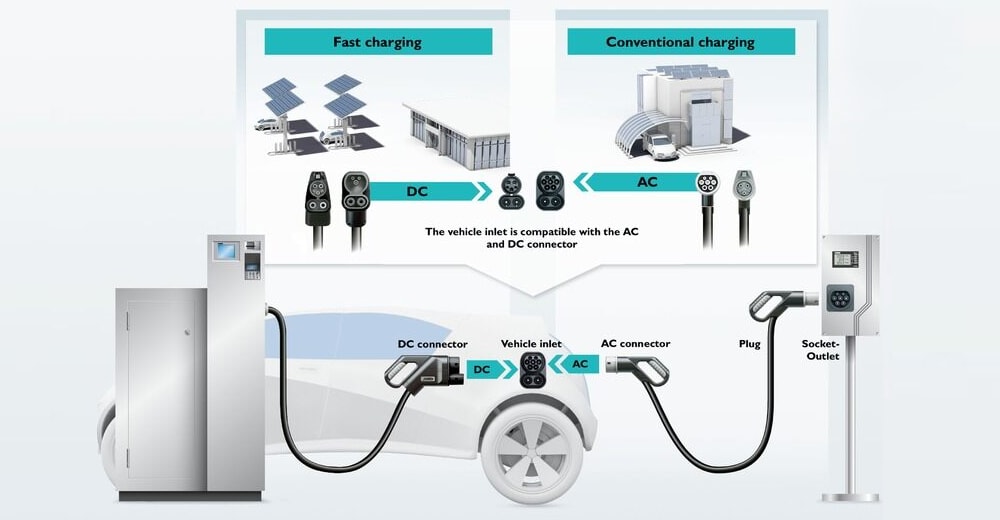
Reducing charging time is something electric vehicle OEMs and EV users have been pushing for. What are the key factors involved in reducing EV charging time?
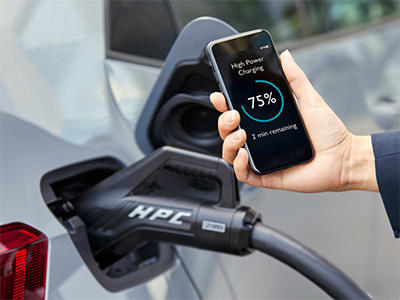

Reducing the charging time helps with EV user adoption because it alleviates both charge time anxiety and range anxiety. Previously, if you had to charge your vehicle overnight, a shorter charge time meant you could only drive a short distance. One of the ways to shorten charge time and not lose drivability range is to charge using a higher current – either AC or DC. Home chargers typically charge using a 32-, 40- or 50-amp charging station. Depending on the electric vehicle’s battery size and your initial charge state, it could take anywhere from 5 to 10 hours for a full charge. We’re seeing more requests in the field for 80 amps in the future to help get vehicles back on the road quicker, but we’re not there yet.
One of the innovations needed to make that happen is larger AC charging stations. Originally, electric vehicles (EVs) began with level 1 charging, which is basically the charging connector that came with the vehicle plugged into a 110 outlet at home, and it would take 10-14 hours or longer to reach a full charge. Level 2 and 3 charging increased the size of the wires connected to the pins in the inlets, the size of the wires in the charge handle, and the inverter size to enable a higher amperage and evolve the technology. As charging technology evolves even more, we are starting to see 80 amps on the AC side, which is good for home charging (where 80-90% of charging takes place), if you can use that big of a circuit in your home.
It’s important to note that most vehicles in the market now are not yet capable of accepting an AC charge at 80 amps. Even some of the newer electric vehicles can only accept a maximum AC current of 30 to 50 amps. When using DC charging, typically done at a higher voltage rating, these same cars can charge at around 125 amps. AC charging is usually limited to 220V (240V in some cases), whereas DC charging can use from 600V to 1,000V. This voltage increase is a distinct advantage that translates to increased power, doubling the amount of charge transferred to the vehicle in the same amount of time. More and more vehicles are getting the capability to charge at higher rates, especially fleet vehicles like buses, delivery trucks, etc. Manufacturers of these larger vehicles are looking to push charging voltages up to 1,000V and currents potentially up to 500 amps.
What are some of the main ways to ensure safety in charging station product designs, particularly in high-power charging products?
All of the EVSE manufacturers (charging station manufacturers, OEMs and suppliers) have to follow the standards put forth by the Society of Automotive Engineers (SAE), United States Council for Automotive Research (USCAR), IEC and UL. Adhering to this myriad of standards will ensure that electric vehicles and charging stations are safe for personal operation and the infrastructure. Following standards is the best way to keep everyone safe, especially when dealing with high voltages and currents like 125 amps or 500 amps and 1,000 volts – that’s a lot of current and a lot of voltage that we need to be careful around.
In the SAE J1772 standard, for example, there are communication protocols for sending communication from the charging equipment to the vehicle. The standard essentially ensures the charging station does not send electricity to the vehicle until the vehicle is ready to accept it. There is also a lock built into the inlet on the vehicle, which deadbolt locks the connector into the inlet on the vehicle, so it cannot be removed while electricity is flowing. Once the charge is completed, the vehicle will communicate that it is finished charging, telling the charging station to turn off the electricity. The charging station, in turn, shuts down the electricity, and the vehicle recognizes this and releases the lock on the inlet so the connector can be disengaged.
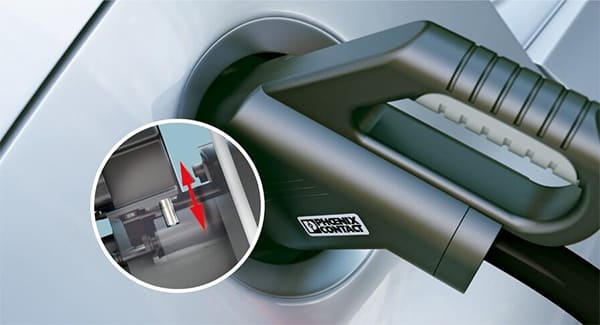
What are some exciting changes you’re seeing in e-mobility infrastructure, and what role will high-power charging play?
High-power charging is really exciting. Along with newer battery technology, HPC will allow electric vehicle (EVs) to go on the types of long-distance trips we are used to doing in cars with internal combustion engines. We won’t have to spend extensive time charging. For example, if your battery is running low, with HPC stations charging at 500A and 1,000V, you could get up to about 80% of the charge in three to five minutes, depending on your battery size and its charge state (and if the vehicle can handle this level of HPC). In up to 30 minutes, again depending on how large the battery is and its initial state, you’d be able to get a full charge.
Instead of having to stay for hours or overnight to charge the car, you can do a quick “top off” to get to your destination or charge while you are grabbing a bite to eat, stretching your legs for a bit, or using the restroom. The closer we get to regular gas station refueling periods, the more likely the increased adoption of EVs, especially as the infrastructure is built out. Imagine you stop for the normal coffee or bio break on your trip and plug in. You get your coffee or lunch and come out. Your car is charged up, letting you continue driving for 200 to 350 miles or even more, depending on your vehicle, battery size and capability to handle these larger currents and voltages.
What is the advantage to EV charging station manufacturers of getting all or most of their charging technology products from one source?
The big advantage is it saves their purchasing departments time and money because they don’t have to qualify and deal with multiple companies. At Phoenix Contact, our engineering team does a lot of internal testing on components – and on comparing and combining them – so we’re in a position to advise on certain design aspects in addition to offering a broad range of components for charging stations and EVs.
However, buying from different manufacturers should not cause issues with compatibility, as long as all components are made to match the current standards. Of course, you have to make sure the company you are buying the products from follows the standards for the country you are in. Unfortunately, some companies do not follow the standards they should in some cases, which you sometimes see when buying components from a different country or region than where the end product will be used.
Should the majority of product designs upcoming focus on HPC innovations since HPC will play a role in building the infrastructure to support better EV adoption?
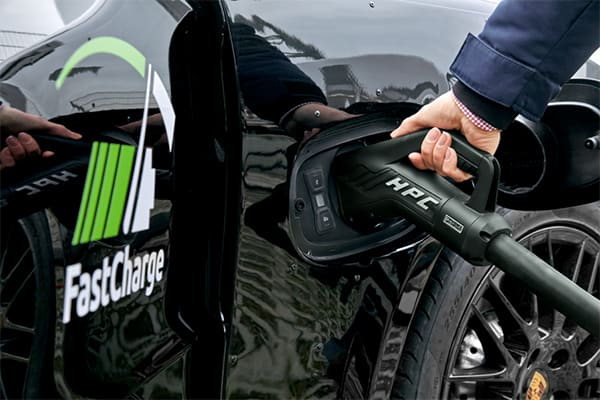
HPC certainly will be a critical element in increasing the adoption of battery electric vehicles. Still, we also have to remember that, for most people, about 80 to 90% of their charging will happen at home with AC charging. So, lower-power AC and DC products are still vital as well. On occasions where EV users take long-distance road trips that exceed the vehicle’s range, the ability to receive a fast charge is important, and that’s where HPC comes in. To accomplish this, HPC stations will need to be installed along the interstate highway system like we have gas stations now at highway rest stops.
HPC also has an important limitation to note: too much high-power charging will degrade the vehicle battery over time. So HPC is not for daily use, but occasional usage is fine. As HPC begins to proliferate within national infrastructures, there could still be exciting industry innovations with charging or EV batteries that develop and diminish this limitation.
Additional Links:
